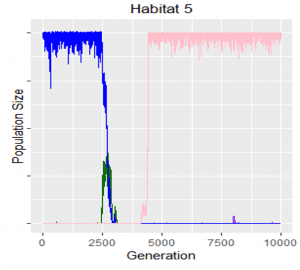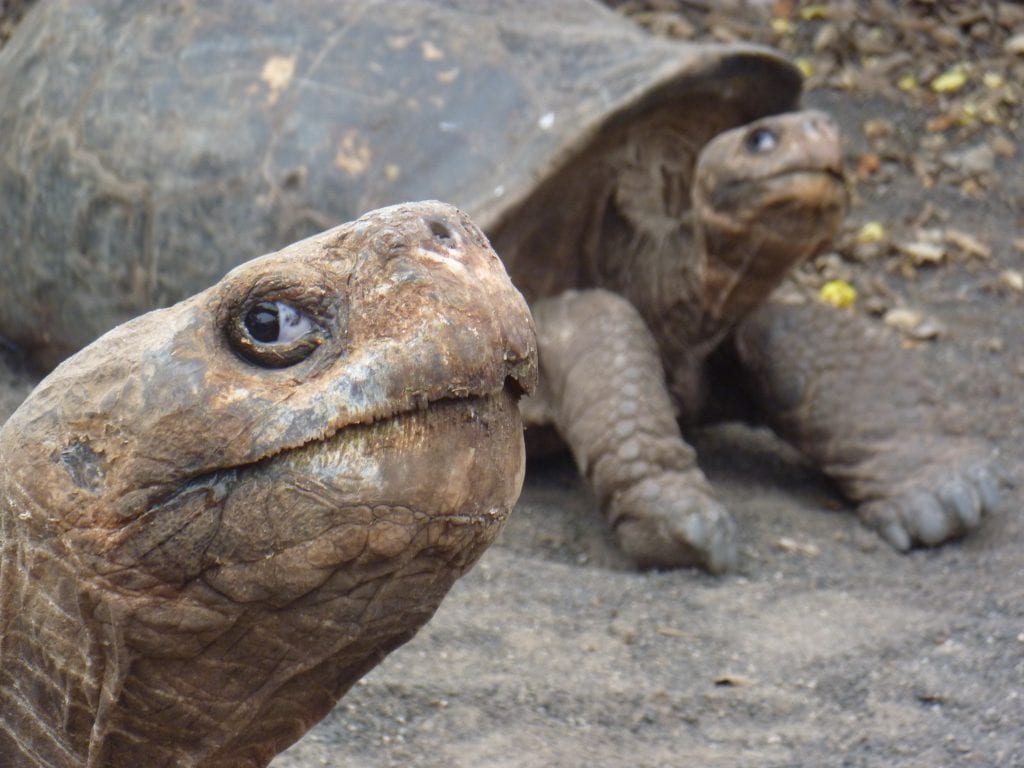While natural selection is traditionally considered to act on the differential survival and reproduction of individual organisms within populations, it is also possible to see differences in the success of genes, cell lines, populations, or species that are distinct from the fate of individual organisms. For instance, a self-serving gene may spread within a population, but populations comprised of many of these genes may be less successful. A computer simulation below shows that the blue species is prone to mutations for an aggressive trait (dark green) that causes individuals to steal resources from conspecifics to enhance their brood size. While this trait spreads rapidly within the population, it also increases the risk of population extinction, allowing a second species to colonize this habitat. Thus, the green trait is selected for at the organismal level and selected against at the population level.

We explore cool questions related to levels of selection in Freedberg and Taylor (2007), Rood and Freedberg (2016), and Freedberg et al. (2021), and are currently preparing a manuscript examining the role of population-level selection on the evolution of social behavior.
